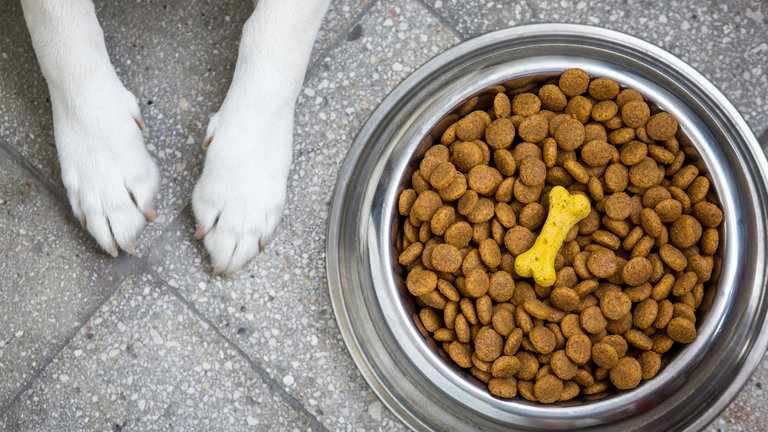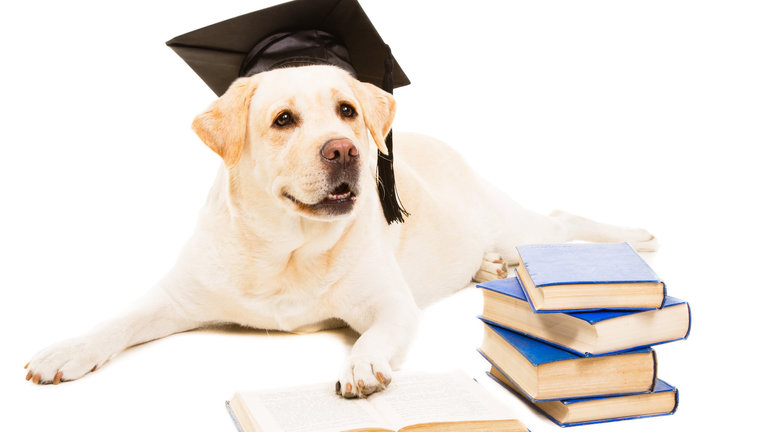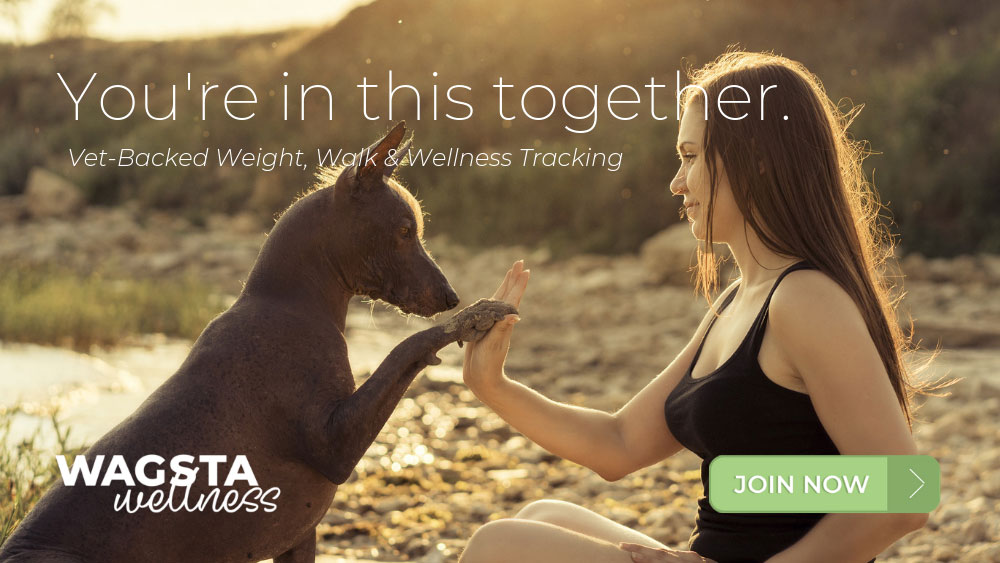Diet Dog Foods:
Low Calorie Dog Food for Overweight & Obese Dogs
One of the easiest ways to help your furred friend lose weight is to feed a light or diet dog food. Read on to learn about diet dog food and to find out whether a low-calorie diet is suitable for your obese dog….
Will Diet Dog Food Benefit Your Dog?

When setting out to help your dog lose weight some of the first questions asked will be:
- What should I feed my obese dog?
- Does my dog need diet dog food?
- Should I simply cut back on the food I usually feed?
Your dog’s need for a specialized diet dog food is determined by their degree of weight gain.
If your dog is just above their ideal weight, you can reduce the portion size of your dog’s regular meals. This option is suitable if your dog's body condition score is no greater than 6 out of 9 (meaning your dog is no more than 10% above their ideal weight).
In this case, meal portions and treat intakes can be tweaked to achieve your dog's reduced calorie allowance.
However, if you need to reduce your dog's daily intake by greater than 15%, switch your dog onto a diet dog food.
The main reason being to avoid nutrient deficiencies.
Commercial dog foods contain their nutrients in ratio to their calorie component. So by cutting back on meal size you will also reduce your dog's intake of vitamins, minerals, amino acids and trace elements.
Diet dog foods are nutrient enriched. This ensures your obese dog receives adequate nutrient intakes, despite the lowered calorie content.
Diet dog foods also allow you to feed a decent serving size whilst dieting your overweight or obese dog.
If feeding a calorie-rich dog food, a significant reduction in serving size will be needed, to meet your dog’s dieting calorie quota. These smaller portions often result in increased hunger levels for your dog. Resulting in reduced owner compliance.
Diet Tip!
If your dog needs to lose greater than 10% of their starting weight, switch to a calorie-restricted diet dog food.
Diet Dog Food Index: Low Calorie Food for Overweight & Obese Dogs
Get access to an overview of diet dog foods from around the world with WAGSTA Wellness.
Diet dog foods are indexed according to calorie and protein content making it simple to find a food best for your dog’s weight loss needs!
Visit WAGSTA to learn more!

10 Tips When Feeding Diet Dog Food to Obese Dogs
Ready to switch your obese dog onto diet dog food? If so, these tips will help get you started.
1. If your dog has a medical condition, seek advice from your veterinarian before making dietary changes.
2. Introduce your dog onto new diet dog food gradually. Do this over the course of 4 days by increasing the new food component whilst decreasing the old.
3. Ignore the feeding guidelines listed on dog food packaging! These guidelines are not specific enough for individual obese dog weight management. The servings suggested on dog food labels are often over generous. Abide by calorie requirements calculated specifically for your dog. Feed this food equivalent only. Find out your dog’s calorie needs here.
4. Once you choose a diet dog food for your dog, continue to feed this food for the entire diet. Switching foods whilst dieting will hinder your dog’s weight loss. It also increases the risk of miscalculation and incorrect serving size. (No two foods weigh the same or contain the same calorie content.)
5. Do not worry about providing your dog variety with their mainstay diet. Modern weight control diets are designed with taste in mind. The majority of obese dogs devour their low-calorie dog food with gusto.
If your choice of food comes in an array of flavors, it is best stick with one for the course of your dog’s diet. Providing a choice of flavors can increase the risk of fussy eating. It is also important to realize that flavor options tend to differ in their calorie content. Aim to provide variety through managed treats.
6. A quality diet dog food should be high in protein. Ideally a meat product is listed first in the ingredient list.
Protein requirements vary between dogs according to their healthy target weight. Large breed dogs will have greater protein requirements. Find out your dog’s protein need here.
7. Ensure you have a plentiful supply of diet dog food in stock so you do not run short during your dog’s diet program.
8. Dog treats and human foods should not account for more than 10% of your dog’s daily calorific intake. Nutritional imbalances can occur if dogs receive too many extras. Read tips on how to curb dog treats here.
9. Remember there is no single best diet dog food suitable for all dogs. Like humans, dogs are individuals with differing preferences and responses to food types. There are hundreds of diet food options available and even more opinions. Find a food that works for your dog and stick with it.
10. The fecal output of some dogs will increase when fed diet dog food. This is due to the increased fiber content of some diet foods. But positives include reduced flatulence and less odorous feces. A little more pooper-scooping is a small price to pay for the extra vitality your dog will soon enjoy.
Once you achieve your dog’s healthy target weight you can transition back to regular dog food.
Looking for Diet Dog Food Recommendations?
Check out WAGSTA Wellness to gain access to international diet food indexes. Diet dog foods are indexed according to calorie and protein content making it simple to find a food best for your dog’s weight loss needs!
